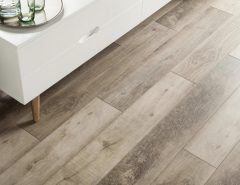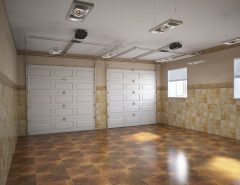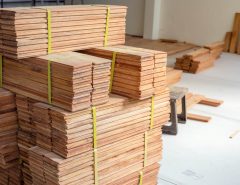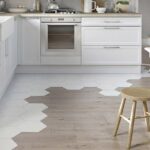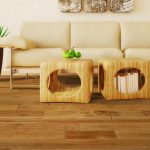 Choice when it comes to flooring has expanded greatly over the last few decades, and particularly in the last decade or so. Now, choice is good as we know. But, sometimes it can be a little overwhelming. After all, a new floor for many people is a long-term investment, not a purchase they’re considering on the fly. In thinking about this long-term approach, and not the short term, ‘it’ll do for now’, there are a few questions to consider when choosing which floor is right for you.
Choice when it comes to flooring has expanded greatly over the last few decades, and particularly in the last decade or so. Now, choice is good as we know. But, sometimes it can be a little overwhelming. After all, a new floor for many people is a long-term investment, not a purchase they’re considering on the fly. In thinking about this long-term approach, and not the short term, ‘it’ll do for now’, there are a few questions to consider when choosing which floor is right for you.
To make it extra easy, I’ve created a short list of questions in no particular order you may want to ask yourself surrounding this question of choosing the right floor for you. And in addition to the list, I’ve attached a slick flow chart, not designed by me (or it wouldn’t be slick), as a takeaway that will help you focus on what’s important for you.
You’ll notice that a lot of the questions aren’t about looks so much. I figure you know what you’re after on that front. But, what I hope you’ll find is the floor that will look good, and will last you a long time, too.
Take a look!
***
1. Affordability
Let’s start with the basics; budget. In this day and age, nearly everyone is thinking about great results for less money. And where many might say that you can’t have both, the flooring industry is making that less true now than it was in the past. For an example of affordability in a floor, some great selections of laminate flooring are waiting for you to explore them, delivering the look of real hardwood at a fraction of the cost. The same goes for many types of tile, perfect for kitchens and bathrooms.
Of course, as soon as we talk about a choice in affordable flooring, the next thought that occurs to a lot of people is the question of how long a floor like that is going to last. Well …
2. Durability
An important question, which has a lot of options open to you, dependent on your circumstances, and of course your climate in many cases. But, generally speaking, high AC rated laminate floors, solid and engineered wood flooring species that rank highly on the Janka hardness scale, porcelain tile, and stone tile are great places to start when it comes to hard-wearing, long-term floors designed to last for decades and beyond.

Here's a flowchart of the types of questions you're going to be asking, and some possible answers to consider as well. Click on this flow chart to view it in detail
3. Warmth and ‘softness’
A lot of people are looking for the softer touch when they shop for floors, with warmth and softness under foot being the most important consideration. Or maybe it’s just the need to make sure that falling objects and people won’t see any damage when landing on the would-be new floor. For situations like this, carpeting is a great choice for warmth, softness, and cushioning. So is cork flooring, which naturally retains warmth and has tiny cells that provide natural cushioning, and noise reduction too. Speaking of which …
4. Quietness
To avoid echo, and the click-click-click of footwear, many people look for flooring that naturally dampens sound, or is at least unlikely to create that echoey, clicky sound. Once again, cork floors is the natural way to go. But, so is carpeting (which absorbs sound by way of thicker underpad), and vinyl tile which can be attached to a subfloor, avoiding any gaps between the flooring and that subfloor, the cause of the ‘echo’ you hear on other types of flooring.
5. DIY-friendliness
For many people, this is tied in with ‘affordable’, while also being dependent on experience and acumen with measuring tapes, power saws, and general carpetry skills as a do-it-yourselfer. Everything’s relative on this front, but generally speaking, ceramic tile, laminate flooring, bamboo floors, engineered wood floors, and vinyl tile are among the first options that many DIYers go for when thinking about ease of installation in flooring.
6. Easily maintenance
Since buying quality flooring is a long-term investment, homeowners like you are also thinking about what comes after the installation. After all, once it’s in and looking great, you have to figure out what to do to make it keep looking great. This is where a lot of the smoother floors come in, particularly laminate floors, tile, and vinyl, which are designed with this aspect firmly in mind. Most of these choices in flooring are kept looking great by way of weekly attention, with dry or barely-damp mopping to clear them of dust and grit; no sealing, no refinishing, no fuss.
 7. Environmentally-friendly
7. Environmentally-friendly
It’s been firmly established that green flooring, and indeed green anything, is more of a spectrum than it is a set of absolutes. But, for floors that tick a lot of the boxes for sustainability, bamboo and cork are the high-profile kingpins of green floors. Linoleum also must be mentioned for high scoring sustainability along a number of fronts. Also, many types of porcelain tile are made using post-industrial materials, making them something of a less publicized green floor.
8. Re-sale value
Some homeowners are looking to the future, but maybe a different future than others. I’m speaking about adding a type of flooring that will increase value and a larger return when selling a property on. In this, the traditional floor covering is the obvious choice. Solid hardwood and stone tile are stalwart choice when looking to achieve that authentic high-end ambience when prospective buyers come to call. To get that ‘ah’ from a broader base of buyer, real hardwood, and natural stone are the go-to surfaces.
***
Now, clearly there are way, way more factors that are going to rightly have an influence on which type of flooring you choose. When it comes to factors like your local climate, the construction of your home, light exposure, average indoor moisture levels, and more, the real expert here is you. So, another bit of advice here is to get into contact with a trusted flooring vendor, and start a conversation with them about some of these factors before you buy.
Ask about which flooring choice makes the most sense for your specific situation. Ask about warranty information too, and find out how much support you can count on post-sale. One of the best ways of achieving success with a long-term investment like your flooring, is to get all the facts from an expert you can trust.
After that, the transformation of your space is in your hands! Good luck!
♦♦♦
If you wish to embed the above flooring flow chart into your own site, please feel free to copy and paste the code below.










